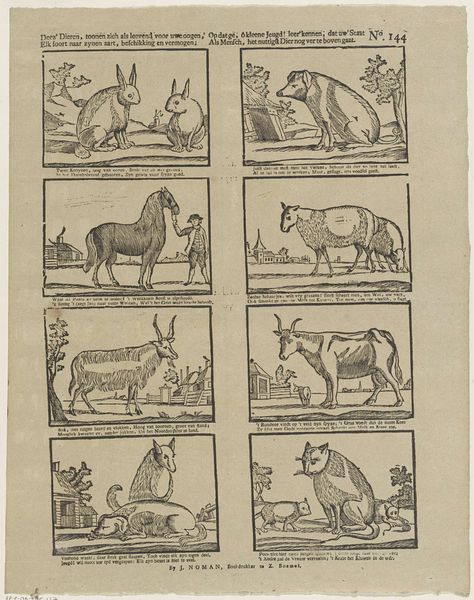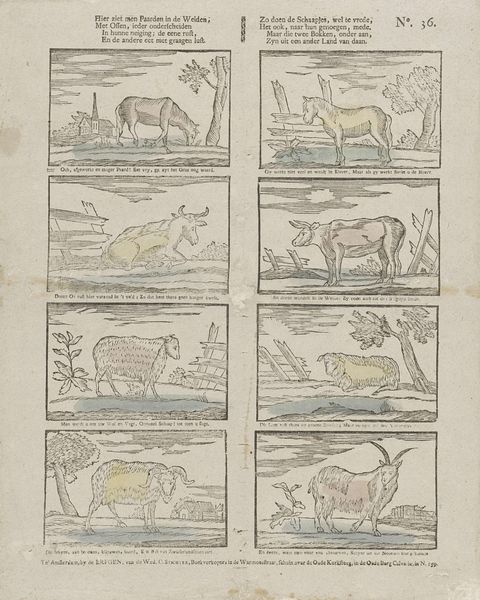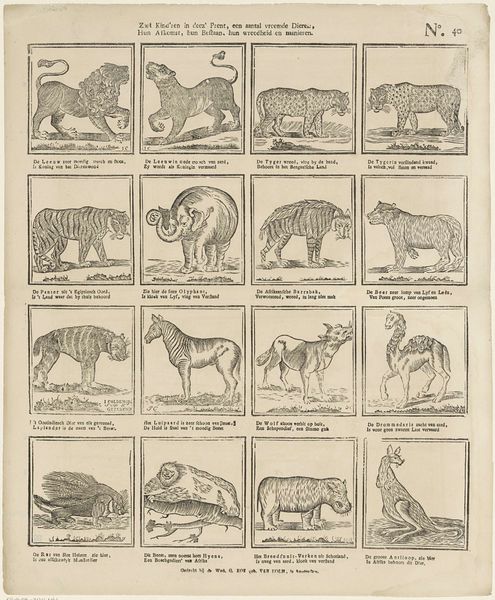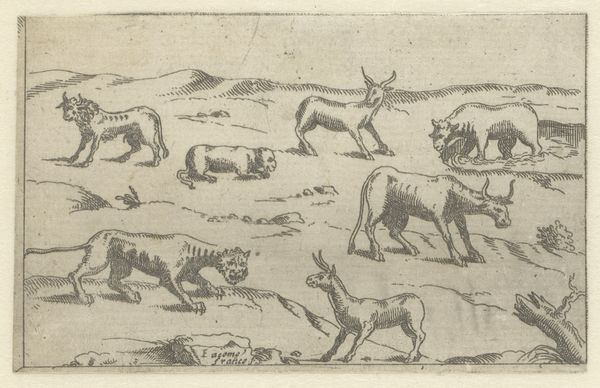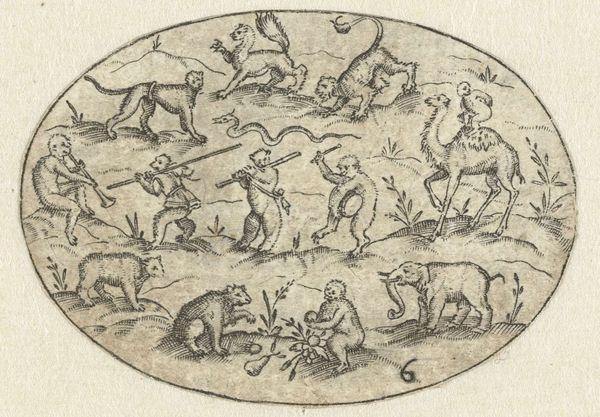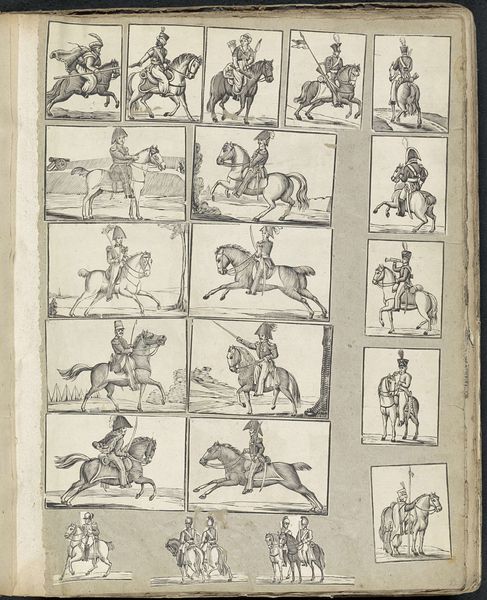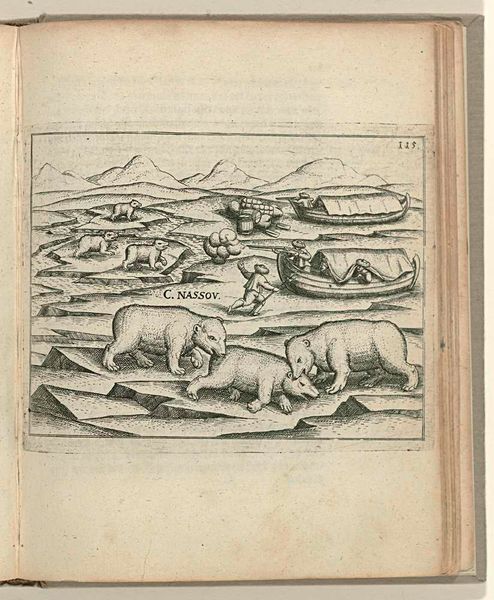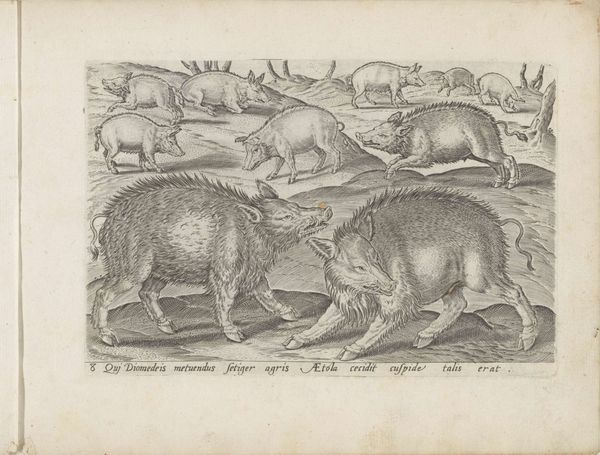![Hier ziet men paarden in de weiden, / Met ossen, ieder onderscheiden [(...)] by Johan Noman](/_next/image?url=https%3A%2F%2Fd2w8kbdekdi1gv.cloudfront.net%2FeyJidWNrZXQiOiAiYXJ0ZXJhLWltYWdlcy1idWNrZXQiLCAia2V5IjogImFydHdvcmtzL2RkMjJlMTJlLTM4ZTQtNDk4OS1iN2YxLWNiZDIyNmY4YTAzOS9kZDIyZTEyZS0zOGU0LTQ5ODktYjdmMS1jYmQyMjZmOGEwMzlfZnVsbC5qcGciLCAiZWRpdHMiOiB7InJlc2l6ZSI6IHsid2lkdGgiOiAxOTIwLCAiaGVpZ2h0IjogMTkyMCwgImZpdCI6ICJpbnNpZGUifX19&w=3840&q=75)
Hier ziet men paarden in de weiden, / Met ossen, ieder onderscheiden [(...)] 1806 - 1830
0:00
0:00
johannoman
Rijksmuseum
drawing, print, paper, ink, engraving
#
drawing
#
neoclacissism
#
dutch-golden-age
# print
#
landscape
#
paper
#
ink
#
horse
#
pen work
#
genre-painting
#
engraving
#
realism
Dimensions: height 406 mm, width 317 mm
Copyright: Rijks Museum: Open Domain
Editor: This is “Hier ziet men paarden in de weiden, / Met ossen, ieder onderscheiden [(...)]” from around 1806-1830, made by Johan Noman. It looks like a print – or maybe a drawing – with several panels showing different farm animals. I am immediately struck by the...I don't know, kind of charming, slightly naive feel? It seems to exist somewhere between detailed observation and cartoon. What do you make of it? Curator: Naive charm, yes, absolutely! And it reminds me that simplicity can hold so much. This piece, with its combination of engraving and pen work, transports me to a time when the rural landscape held a very different kind of cultural significance. What do you see in the depiction of the animals themselves? Editor: Well, they all seem very calm, posed almost. They're not interacting much, just kind of existing within their little frame. There's a remoteness, a separation from the viewer maybe? Curator: Precisely! And consider the time – early 19th century. Neoclassicism was in full swing, often drawing inspiration from idealized, agrarian visions of life. These animals, posed and somewhat detached as you say, could represent a longing for a simpler time, maybe an idealized vision of rural life... Did the artist succeed, do you think, or does the lack of 'action' let the whole thing down? Editor: I can see that! The sort of static, very neat quality perhaps speaks to that desire for order, or maybe an ordered vision of reality... and I also now read their placidity differently... like they exist as 'specimens', categorised... maybe even as "this is Holland" in a way... Curator: A Dutch brand, almost! Interesting... It reminds me that every artist makes choices... The key, as viewers, is that we allow art to trigger a fresh conversation each time... that is success, if you ask me! Editor: I completely agree. Thanks, I think I see more deeply into the work now, and understand some of its underlying social meanings.
Comments
No comments
Be the first to comment and join the conversation on the ultimate creative platform.
